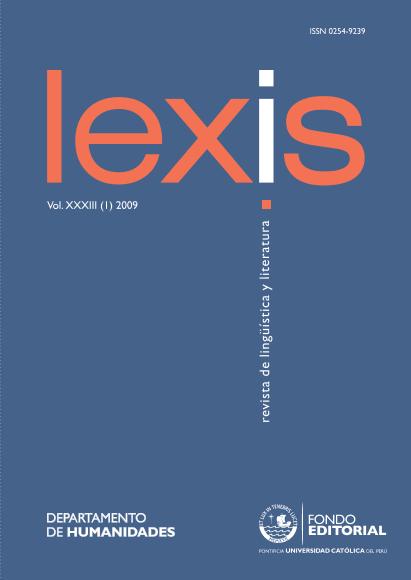Artículo
El contexto de globalización económica y de integraciones regionales impulsó una renovación de los instrumentos lingüísticos académicos. Esta renovación vino de la mano de un aparente cambio en el interés político y teórico de la Real Academia Española capaz de representar el estatuto de lengua internacional del español. En el presente artículo examinamos los discursos que la Academia elaboró en los últimos años con el fin de convalidar sus instrumentos normativos. Para ello, analizamos la Nueva política lingüística panhispánica, documento que expresa las principales líneas de esta nueva política sobre el español, el Diccionario panhispánico de dudas y la Prepublicación de la Nueva Gramática de la Lengua Española en tanto manifestaciones concretas de dicha política. Concluimos que la nueva política lingüística panhispánica resulta ser más una operación discursiva que otra cosa. En efecto, lejos de fomentar una distribución equitativa y multilateral de las funciones en la estructura organizativa, continúan reproduciéndose las antiguas jerarquías en la toma de decisiones, sosteniendo una clara centralización en los procesos de estandarización en el mundo hispánico The context of the economical globalization and the regional integration has promoted a renovation of the linguistic devices used by the Royal Academy of the Spanish Language. This renovation came along with an apparent turn in the political and theoretical interests of the Academy —institution that is capable of representing the statute of Spanish as an international language. In this article, we examine the discourses that the Academy devised in the last few years in order to validate their normative devices. In that sense, we analyze the Nueva política lingüística panhispánica —document that depicts the principal outlines of this new policy regarding Spanish—, and the Diccionario panhispánico de dudas and the Prepublicación de la Nueva Gramática de la Lengua Española as concrete manifestations of that policy. We conclude that the new Panhispanic language policy turns out to be more a discursive operation rather than anything else. Indeed, instead of endorsing an equitable and multilateral distribution of the functions of the organizational structure, they continue to reproduce ancient hierarchies in the decision making, supporting that way a clear centralization of the standardization in the Hispanic world
Instrumentos lingüísticos académicos y norma estándar del español. La nueva política lingüística panhispánica
Fecha de publicación:
12/2009
Editorial:
Pontificia Universidad Católica del Perú
Revista:
Lexis
ISSN:
0254-9239
Idioma:
Español
Tipo de recurso:
Artículo publicado
Clasificación temática:
Resumen
Archivos asociados
Licencia
Identificadores
Colecciones
Articulos(IIBICRIT)
Articulos de INST.DE INVEST.BIBLIOGRAFICAS Y CRITICA TEXTUAL
Articulos de INST.DE INVEST.BIBLIOGRAFICAS Y CRITICA TEXTUAL
Citación
Lauria, Daniela; Lopez Garcia, Maria; Instrumentos lingüísticos académicos y norma estándar del español. La nueva política lingüística panhispánica; Pontificia Universidad Católica del Perú; Lexis; 33; 12-2009; 49-89
Compartir




